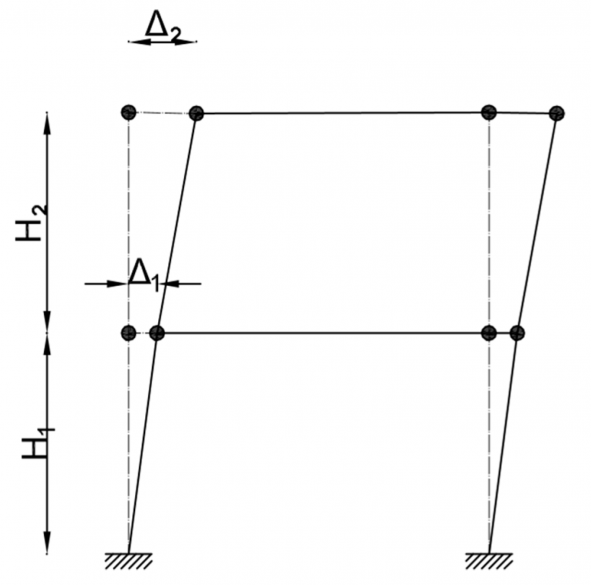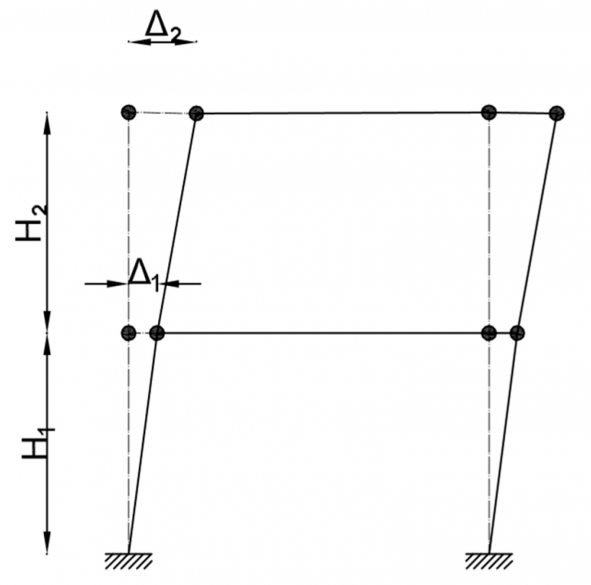As a civil engineer, understanding floor displacement is essential to successful planning for a tall building. Whether you are a practicing civil engineer or a student gaining knowledge in the field, it is essential to understand the displacement of history and its effects. This article examines story change and how it is used to attract civil engineers, focusing on the motivations behind it and how it can be addressed effectively.
Story shift is the horizontal movement of a building or structure due to external forces such as wind or earthquakes. It is usually measured in millimeters or fractions of an inch. Although floor movements are relatively small, they can have a significant impact on the safety and performance of a building or structure.
In some cases, floor misalignment can cause a building or structure to collapse.
Factors influencing the course of action
There are several factors that can contribute to the change in history.
- The type of construction
- The size of the building or structure
- Weight of the building or structure
- The type of foundation.
- Historical displacement can be exacerbated by the presence of soft soil or weak rock.
When the story changes, it is usually the result of a combination of these factors.
Furthermore, the following factors are considered important factors that contribute to soil drift.
- Building height
- Floor to floor height
- Building stiffness and its variation
The amount of floor displacement that occurs in a building or structure generally depends on the height of the building or structure. Taller buildings or structures are more susceptible to floor changes than shorter buildings. This is because taller buildings or structures are more likely to be affected by external forces such as wind or earthquakes. Additionally, taller buildings or structures are more likely to support heavier loads, which can contribute to floor shifting.
How to calculate story deviation
The floor displacement is not equal to the lateral deflection of the building. It is movement in the lateral direction. Floor displacement, on the other hand, is a kind of assessment of the relative movement of the structure.
Floor displacement is calculated between floors. The relative movement of the two different floors is checked (movement of one floor in relation to the other).


As discussed previously, floor displacement is the relative movement of the ground in relation to the floor height.
Let's calculate the drift.
Relative motion = Δ 2 –Δ 1
Floor height = H 2
Floor displacement = (Δ 2 –Δ 1 ) /H 2
What are the limits for floor displacement
Limiting the structure's deviation also indirectly controls the lateral displacement of the structure. If the displacement of the building is small, the lateral displacement of the building will also be smaller.
The displacement of a building is limited in the same way as the deflection of a building. Typically, the lateral displacement limit of a building is given as the height divided by some values.
Lateral displacement of the structure occurs mainly due to wind loads and earthquakes. There may also be other exceptional charges, such as explosive charges, that need to be handled differently. We will not go into detail about these charges here.
Limit values for wind and earthquake drift could have been specified in the standards. It is noticeable that some standards do not specify any limit value for deviation.
Commonly used drift range – H/200 – H/600
The most commonly used limit deviation values are H/400 or H/500.
Depending on the relevant standards, you can select deviation limits. I would prefer H/500 as the allowable limit for floor deviation.
Why should we worry about floor shifting?
It is very important to pay attention to the floor displacement and keep it within the specified limits. It is a type of limit on the use of a structure that controls deflection.
Unlike the global deformation of the structure, it indicates the behavior of the structure at a different level. This cannot be observed in the overall deflection of the building.
If weak soils have lower stiffness and can therefore fail, this can be identified through drift values. Based on this, necessary changes can be made during the project.
- Limiting runout allows you to avoid damage to non-structural components. Excessive lateral deviations can cause cracks in the fixation to the main structure. Cracks in brick walls, damage to ceilings, partitions, electrical equipment, etc. may occur.
- If we find that there is excessive deflection between the floors, this can be changed or adjusted during the project. Necessary precautions such as continued Shear walls Increasing column stiffness, etc. could be carried out as structural changes for analysis.
- Particular attention should be paid to structural analysis. The values obtained through the analysis must be verified by other evaluation methods based on experience, otherwise we will obtain incorrect results. Decisions made based on this incorrect information will result in increased construction costs if structural rigidity and if we reduce rigidity this could lead to structural failure.

